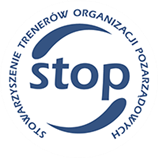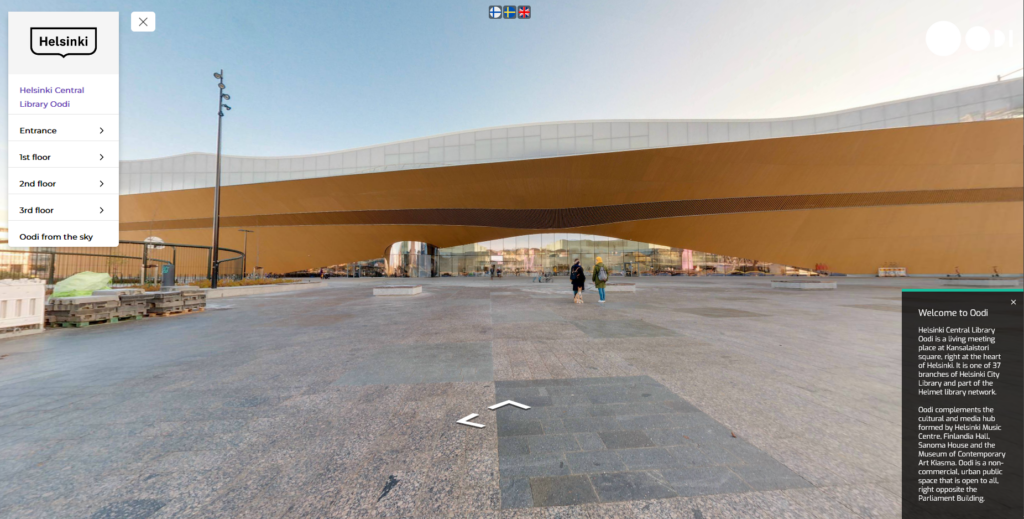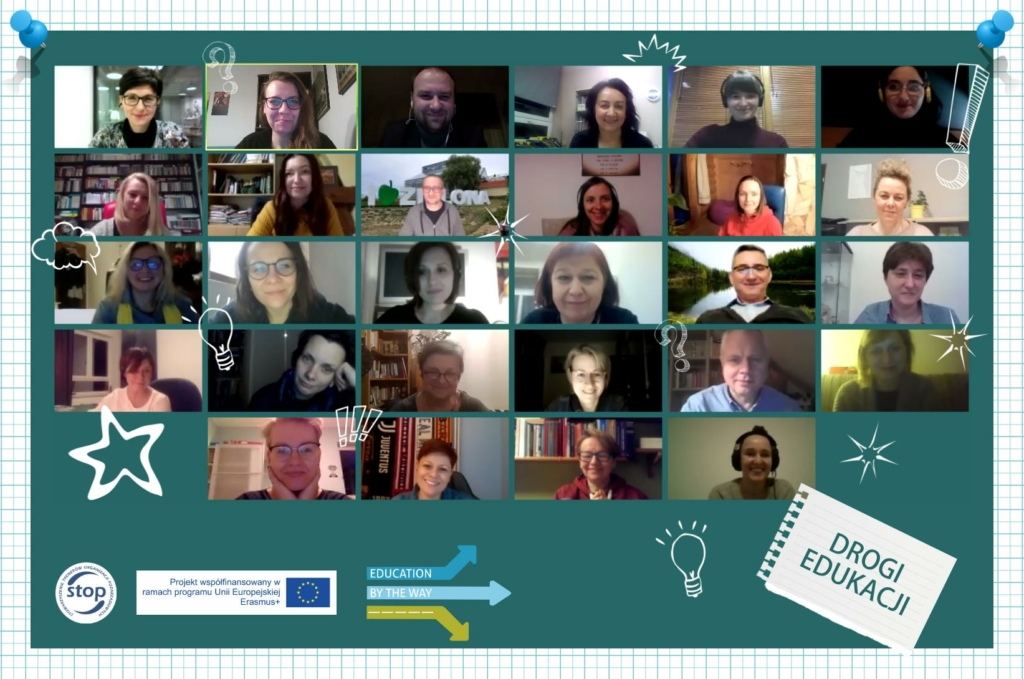How has the pandemic even made the outdoors online, and what a teachable result it has been
Education outside the training room is the exploitation of opportunities provided by the external environment to achieve training objectives. It can get close to outdoor education (outdoor learning), which is based on contact with nature, although, in contrast, it can also be rooted in the material creations of humanity. It is emphasised that important elements of outdoor learning are the experience of play and the emotions associated with e.g. discovery, and competition. By that, outdoor learning comes close to gamification principles. Fun, movement, puzzles, or contact with nature – all of these should serve the educational process, but not overshadow its primary purpose.
What could be the main benefits of going outside the training room with learners? I will give an example from formal education – I once taught a class on social assistance institutions to students of a social studies course. The first surprise was that those who were supposed to be professional creators and managers of social policy were guided by widely held stereotypes, such as that social welfare centres’ activities are limited to the payment of benefits, social workers are soulless bureaucrats and generally, all social assistance institutions are black holes of conflict, underfunding and falling plaster. Fortunately, the classes had the character of working outside the classroom – we met at the various institutions to get to know their staff, tasks, etc. It was a huge surprise for the students to come across professionals who deviate from the media image of “the social service will come and take your children away from you”, who work in friendly and functional places that also deal with culture or social innovation. I do not think it would be possible to achieve a change in the stereotype of these institutions from the lecture room level, even if we watched all the episodes of “Głęboka Woda” (“Into deep water” – Polish series about employees of a social welfare center) during classes. Unfortunately, for most of the students, this was their only contact with the helping professions. It remains to be hoped that the experience of physical presence has translated into warmer thinking about the social welfare system.
Education outside the classroom is sometimes even an indispensable necessity (how to teach kindergarteners to cross the road in the right place at the right light?), it could be an engaging pastime (e.g. if the obligatory library training at university, instead of tour, was arranged as a location-based game with tasks to be completed), it could support integration (I imagine teaching immigrants the skills to navigate new realities as a plan to visit important and helpful places with concrete interactions to be made and information to be gained).
We had similar goals when constructing the educational étude “Oodi Library” as part of the Education by the way project of the NGO Trainers’ Association sTOP – we wanted to ask questions about the priorities and processes of modern education by exploring the best world public library of 2019 – Helsinki Central Library Oodi.
A detailed description with reference to education outside the training room is available in the project’s publication “Education by the way. Manual for education activists working with people with low competences” (description of the etude pages 63 – 68).The success of the educational process at the Helsinki workshop encouraged us to implement it in Poland. We addressed the dissemination workshop to male and female trainers, so the main objective was to familiarise them with the methodology and encourage them to reflect on their adaptation to their training needs. And then came the pandemic…
We decided to test the flexibility of the proposed étude scenario. Thanks to the possibility of a 360-degree virtual walk-through, we were able to preserve the initial structure quite faithfully. To make the experience more real, VR goggles can be used.
STRUCTURE (in the perspective of the Kolb cycle)
In the concrete experience stage, as in the étude performed on-site, we left it up to the participants to choose between the path of individually discovering the space and its meaning (Explorers) or solving puzzles (Detectives). The use of the Zoom platform allowed to divide participants into teams, each in a separate room. Each team was given instructions pasted in the chat room and for the Detectives’ team pictures of items to find.
The instruction for participants in the online learning étude outside the classroom – Oodi Library
For EXPLORERS
You are EXPLORERS – members of one team, and you act together. Take a look around Helsinki’s Oodi Library (link to virtual walk-through: https://360.northmanvr.com/F1utgPQ3E0/12117836p&321.87h&88.92t)
Choose any place/subject that you find particularly interesting/significant/unique based on the following questions:
- What is THAT something in the library for?
- What does it say about the education of the future?
Take a screenshot (Windows – PrtSC button, Mac – cmd+shift+3 combination, smartphones – shortcut bar at the top, or volume key combination). You can then trim it to make it less obvious – when we all get together, it will be up to the other people to guess what you have chosen.
You have 15 minutes to complete the task. If you have any questions for me, please use the Ask for Help option. Good luck!
For DETECTIVES
You are DETECTIVES – members of one team, and you act together. Your task is to find a secret place/object, a photo of which you are about to receive. Use a virtual tour of the Oodi library (https://360.northmanvr.com/F1utgPQ3E0/12117836p&321.87h&88.92t).
If you find the puzzle too difficult to guess, use the Ask for Help option to get a hint.
When you have solved the puzzle, discuss the following questions:
- What is THAT something in the library for?
- What does it say about the education of the future?
When we all meet, please share your photos and conclusions.
You have 15 minutes to complete the task. If you have any questions for me, please use the Ask for Help option. Good luck!
The 15 minutes assumed in the instruction turned out to be far too little, which was partly due to technical difficulties (moving to the different rooms, the link speed needed to load the 360-degree view, the ability to move smoothly through the virtual tour, the preparation of screenshots, etc.) and partly due to communication and process issues (time to get to know each other in the groups, interpreting the exercise, dividing up the tasks, communication during implementation, collecting and preparing the results, etc.).
The presentation of the results of each group’s work was essentially a transition to the second stage of the Kolb cycle, i.e. reflective observation. Participants shared their perceptions of the experience at the emotional and cognitive reflection levels. They focused a lot on evaluating group work and practical application, which was the starting point for the final stage of the Kolb cycle. They also presented the results of their work, which became a renewed experience for others outside the given group (the presentation of the Explorers’ screenshots arranged the discussion).
The abstract conceptualisation and knowledge stage boiled down to a moderated discussion around the second question in the instruction – what does the comprehensiveness of the library say about the education of the future? The conclusions of this phase were, of course, based on the examples brought in by the participants. In addition, this phase reflected on the overall model of formal and informal education and the importance of the library in the digital learning era.
The application in this case was a reference to the objective of the workshop and a meta-reflection on the tool itself and its use in a remote form. We encouraged participants to reinterpret freely and find objectives and forms appropriate to their audience.
CONCLUSIONS
Moving learning outside the classroom to virtual reality has one major drawback – it limits sensory experiences and ways of interacting with space and people. In our case, it limited interaction to practically only images. Of course, we can imagine more advanced scenarios, that will involve, for example, calling representatives of a given institution or entering into a discussion on chat with them. However, most probably, contact will be difficult and poorer.
The tool, in its on-site version, assumed the need to interact with library staff, to ask them questions, and to ask for advice. In the situation of working with a group of blind or dim-sighted people, learning outside the classroom can completely fulfil its objectives; but hardly at all in the case of remote learning. While waiting for the metaverse to come to fruition, if we believe that virtual reality will be able to perfectly, or simply well, imitate the real one, we have to accept an incomplete reception in the virtual world.However, there are many benefits to be seen – both in situations of enforced isolation, but also in situations of restricted mobility due to, for example, disability or long distance – when learning and experiencing is possible in the space shared online. From museum lessons (more and more institutions are inviting visitors to explore their resources online) through discovering the city (using, for example, google street view) to reading the meanings of space in visual sociology (e.g. how a pink wall in Los Angeles became a global Instagram phenomenon). It is worth remembering, however, that learning, including out-of-class or outdoor learning, is not just a virtual walk-through, but a planned process with defined goals and a methodology leading to them.
Another benefit can be the enhancement of communication and group cooperation skills. By preparing instruction appropriately, we can encourage learners to interact, support and help with the task. It is also a chance to look at how group processes work and whether you can spot any differences between on-site and virtual groups.
Of course, the potential for developing digital skills is also worth bearing in mind. On the one hand, online learning outside the classroom requires relevant competencies, but if these become the goal of learning, the process can be designed to support their development. It is about navigating the internet space, operating the tools, and using digital resources.
We encourage the use of the example described, its far-reaching modification, and bold experimentation with the learning process. Perhaps the solution proposed above is secondary to the possibility of learning outside the classroom in the real world, but it may also carry solutions to the challenges of more than just pandemic times.
Author: Łukasz Szewczyk
Translation from Polish: Anna Motwicka-Kaczor

Translation of educational material financed as part of Skrzydła dla STOP project from the funds received from NIW- CRSO under The Civil Society Organisations Development Programme for 2018-2030 CSODP (PROO).



